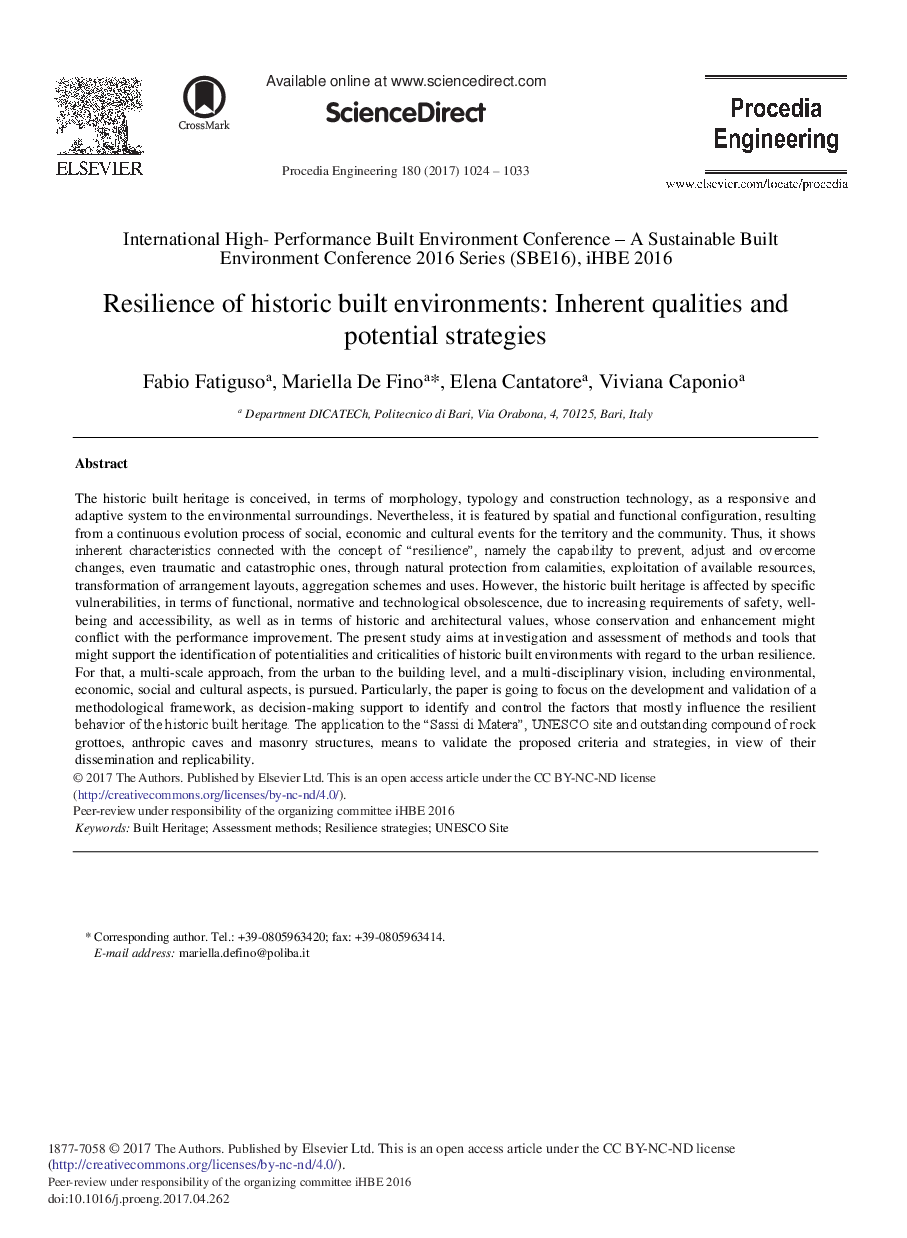The historic built heritage is conceived, in terms of morphology, typology and construction technology, as a responsive and adaptive system to the environmental surroundings. Nevertheless, it is featured by spatial and functional configuration, resulting from a continuous evolution process of social, economic and cultural events for the territory and the community. Thus, it shows inherent characteristics connected with the concept of âresilienceâ, namely the capability to prevent, adjust and overcome changes, even traumatic and catastrophic ones, through natural protection from calamities, exploitation of available resources, transformation of arrangement layouts, aggregation schemes and uses. However, the historic built heritage is affected by specific vulnerabilities, in terms of functional, normative and technological obsolescence, due to increasing requirements of safety, well-being and accessibility, as well as in terms of historic and architectural values, whose conservation and enhancement might conflict with the performance improvement. The present study aims at investigation and assessment of methods and tools that might support the identification of potentialities and criticalities of historic built environments with regard to the urban resilience. For that, a multi-scale approach, from the urban to the building level, and a multi-disciplinary vision, including environmental, economic, social and cultural aspects, is pursued. Particularly, the paper is going to focus on the development and validation of a methodological framework, as decision-making support to identify and control the factors that mostly influence the resilient behavior of the historic built heritage. The application to the âSassi di Materaâ, UNESCO site and outstanding compound of rock grottoes, anthropic caves and masonry structures, means to validate the proposed criteria and strategies, in view of their dissemination and replicability.


